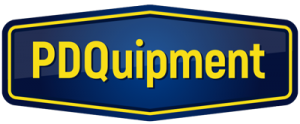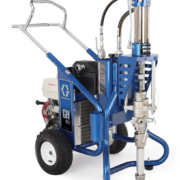The Types, Materials, and Methods of Fireproofing
With temperatures on the rise across the world, the heat is on and the fires are ready to blaze. A single spark at the wrong time can ignite a fire that roars across thousands of acres, destroying all nature and construction along the way. Those who are unprepared can lose everything they’ve worked so hard to achieve in a flash before their eyes. If you are concerned about the danger of an uncontained fire rampaging through your home or office, a fireproofing contractor can help you sort through the types, materials, and methods of fireproofing available to ease your worries.
The Types of Fireproofing
It requires a mix of both active and passive fireproofing methods to adequately meet the standards of fireproofing needed to keep personnel and equipment safe while also achieving any legal requirements set forth by regulatory bodies like OSHA and the suggested protection levels recommended by the NFPA.
Active fireproofing includes the methods that are employed once a fire is burning and causing damage. Some can be automatically activated, like a water or chemical sprinkler system that triggers once a fire is detected. Others require someone to use them, such as a portable fire extinguisher.
Passive fireproofing is the variety of preventative measures used by fireproofing contractors to reduce a structure’s susceptibility to both catching fire and suffering damage during a fire. Techniques range in complexity from the relatively mundane – such as moving combustible materials to safer storage locations – to the usage of synthesized materials that leverage modern science for enhanced fireproofing.
Materials Used in Fireproofing
Fires come in a broad array of types and sizes, so fireproofing contracts make use of an equally versatile selection of materials to best fight back against fire in any circumstance. The following list is not comprehensive, but it covers some of the most commonly used materials.
Water is still a key firefighting element, but its poor interaction with electronics makes it a less attractive option in the modern era.
Chemical extinguishers spray different substances that put out fires by stifling the chemical reactions that create heat. The types of fires that an extinguisher will work against are indicated on its label.
Spray-Applied Fire Resistant Material (SFRM) is a group of materials that are discharged through a pump as a foam.
Intumescent Paint is a special coating that resists fire and adheres well to metals.
Scaffold sheeting is a thin, transparent wrap that goes around the scaffolding during construction.
Masonry like bricks and stones have historic significance as a fireproofing method, and concrete buffering joined it as a similar alternative after it was created. Both are still used as supplemental fireproofing or for specific purposes like stone fireplaces, so they can be factored into the structure’s fire resistance.
Rockwool is a mineral-based insulation material installed in a way similar to typical home insulation. It comes in a premade form that can be hard to modify, so it requires good measurements to make it easy to use.
Implementing Methods of Fireproofing
The methods that a fireproofing contractor will use vary based on where the structure is in the construction process, but prevention is always better when started early. Before construction begins, a skilled fireproofer can identify potential hazards while offering constructive alternatives and help determine what fireproofing methods will be needed throughout the construction.
While the building is actively being constructed, scaffold sheeting and fireproof tarps are used to make it harder for external fires to reach the structure and for wind to add oxygen to an internal spark. This is also a great time to put solid insulation like rockwool and SFRMs in spots that will be harder to access later. Once steel and metal structures are in place, intumescent paint can be applied to enhance the material’s natural fire resistance. There are plenty of other methods of improving fireproofing during construction, so it’s best to include a professional fireproofing expert in the process.
When improving an existing structure, SFRMs and coatings can be applied to any exposed surface. Making sure that nearby extinguishers have been inspected and are rated for the potential fires they’ll fight is vital. It’s always good to double-check that sprinkler systems are properly working, and the location of stored materials should be reviewed to ensure that combustible materials aren’t being piled into one spot to create a larger hazard.
Acquiring Fireproofing Equipment
If you’re a fireproofing contractor or a building owner who wants to improve your protective capabilities, consider expanding your inventory with the fireproofing equipment available from PDQuipment. We have the pumps, mixers, hoses, and nozzles necessary to apply any type of SFRM or intumescent paint. Our tool and accessory selection will get your existing equipment back into working order so you can get the job done. For jobs on a larger scale, we have capable and reliable machinery like the CM1500 portable fiber blower that quickly coats a broad surface in fire-resistant material.
The best equipment for preventing fires is more information, so if you have any questions about fireproofing or our equipment, contact PDQuipment before that fateful spark ignites.




